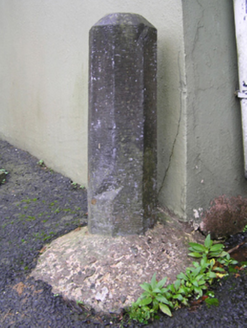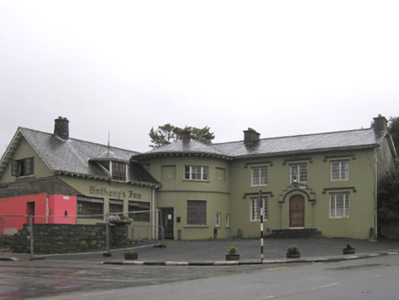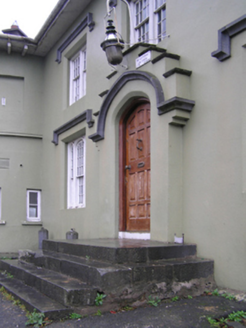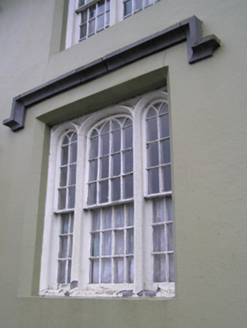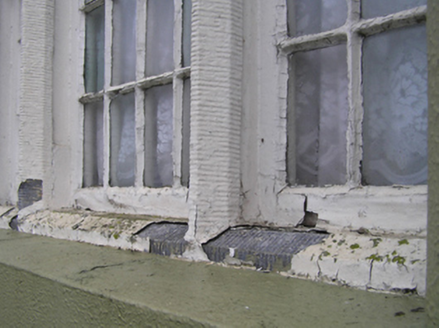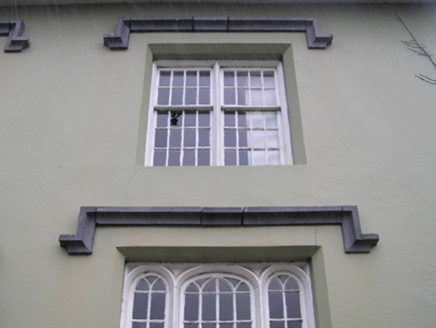Survey Data
Reg No
12325008
Rating
Regional
Categories of Special Interest
Architectural, Artistic
Original Use
Hotel
Date
1815 - 1835
Coordinates
246068, 122209
Date Recorded
05/07/2004
Date Updated
--/--/--
Description
Detached three-bay two-storey hotel, extant 1835, on a rectangular plan. Undergoing renovation, 2004. Pitched slate roof with clay ridge tiles, rendered chimney stacks having concrete capping supporting terracotta pots, and cast-iron rainwater goods on timber eaves boards on slightly overhanging timber eaves retaining cast-iron downpipes. Rendered wall to front (west) elevation; roughcast surface finish (remainder). Tudor-headed central door opening approached by flight of four drag edged tooled cut-limestone steps supporting cast-iron bootscrapers, concealed dressings with dragged cut-limestone hood moulding framing timber panelled door. Elliptical-headed window openings in tripartite arrangement in square-headed recesses (ground floor) with dragged cut-limestone mullions, and concealed dressings having chamfered reveals with dragged cut-limestone hood mouldings framing twelve-over-twelve timber sash windows without horns having six-over-six sidelights without horns. Square-headed window openings in bipartite arrangement (first floor) with mullions, and concealed dressings having chamfered reveals with dragged cut-limestone hood mouldings framing eight-over-twelve timber sash windows without horns. Street fronted on a corner site with group of five dragged cut-limestone octagonal hitching posts.
Appraisal
An hotel representing an important component of the early nineteenth-century built heritage of Piltown with the architectural value of the composition confirmed by such attributes as the compact plan form centred on a crow stepped doorcase; and the diminishing in scale of the openings on each floor producing a graduated tiered visual effect with those openings showing pretty multipartite glazing patterns: meanwhile, 'the turreted angle of the building' was once home to 'a museum fitted up by Mr. Redmond Anthony [1768-1848] whose collection of paintings, minerals, fossils, gems, statuary, medals, armour [and] antiques of every description and from every country…might fairly challenge many museums of great pretensions and extent to an examination' (The Dublin Penny Journal 1834, 238-30). Having been well maintained, the elementary form and massing survive intact together with substantial quantities of the original fabric, both to the exterior and to the interior, including shimmering crown or cylinder glazing panels in hornless sash frames: however, an unfinished restoration may determine the ongoing architectural heritage status of an hotel making a pleasing visual statement in a rural village street scene.
